Wyoming, a mountain state in the Western United States, is renowned not only for its pristine and majestic beauty but also as an ideal destination for those seeking sustainable ecotourism experiences. Here, nature is preserved and respected, offering visitors the opportunity to immerse themselves in a healthy natural environment, explore diverse ecosystems, and contribute to responsible tourism development. Wyoming welcomes you to embark on a journey to discover magnificent natural wonders while experiencing authentic ecotourism.
Wyoming – A Haven for Sustainable Ecotourism
Wyoming proudly boasts numerous world-famous national parks and nature reserves, notably Yellowstone and Grand Teton National Parks. With vast areas and diverse landscapes ranging from towering mountains and expansive grasslands to spectacular hot springs, Wyoming is home to countless species of wildlife. The government and people of Wyoming are deeply aware of the immense value of nature, and have developed and implemented sustainable tourism policies to protect the environment and ecosystems for future generations.
Ecotourism in Wyoming is not just about admiring scenic beauty, but also about interacting responsibly with nature. Tourism service providers here are committed to minimizing negative impacts on the environment, encouraging visitors to participate in nature-friendly activities such as hiking, cycling, kayaking, and observing wildlife from a distance. Wyoming is committed to providing visitors with memorable travel experiences while contributing to the conservation of the invaluable natural beauty of this land.
Yellowstone National Park: An Ecotourism Icon
Yellowstone National Park, the first national park in the world, is Wyoming’s jewel and an icon of ecotourism. Yellowstone is famous not only for its unique geothermal wonders like the vividly colored Grand Prismatic Spring and the regularly erupting Old Faithful geyser, but also as a biodiversity reserve with a rich wildlife population.
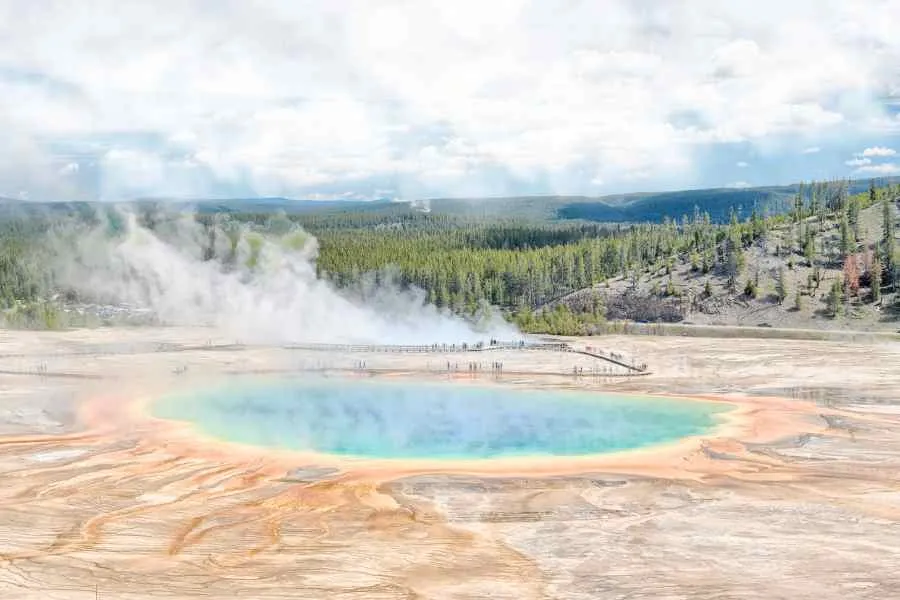
Ecotourism in Yellowstone focuses on exploring nature sustainably. Visitors can join guided hiking tours on environmentally friendly trails, learn about the park’s unique ecosystems through education centers and ranger programs. Wildlife viewing, including bears, wolves, bison, and elk, is an unmissable experience, but is always conducted from a safe distance to avoid disturbing their natural lives.

Yellowstone is also a pioneer in sustainable tourism management. The park implements measures to control visitor numbers, encourages the use of public transport and renewable energy, and raises environmental awareness among visitors and the local community. By visiting Yellowstone, you not only admire the magnificent beauty of nature but also contribute to the conservation efforts of this legendary national park.
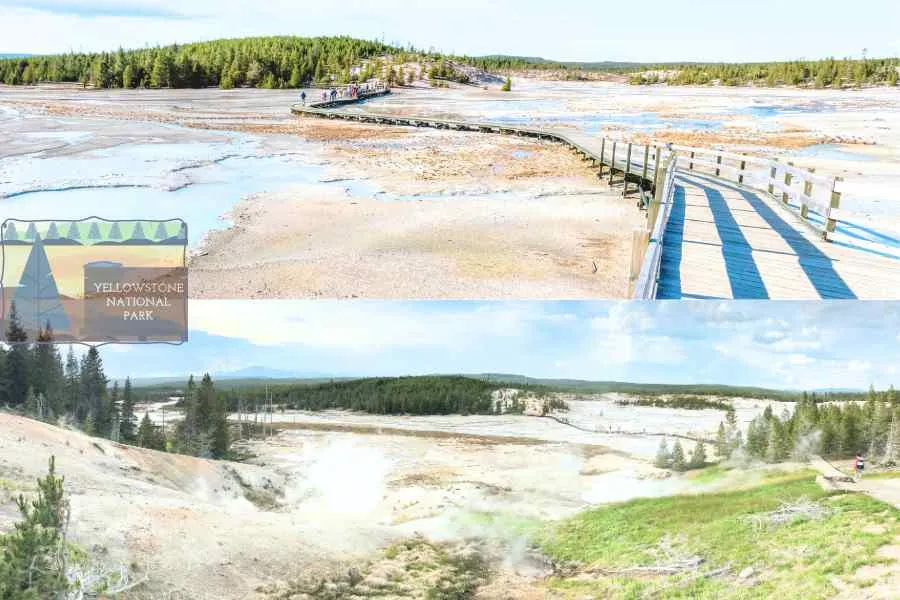

Grand Teton National Park: Immerse Yourself in Wilderness
Located just south of Yellowstone, Grand Teton National Park offers the majestic beauty of the Teton Range with snow-capped peaks reflected in serene lakes. Grand Teton is an ideal destination for those who love outdoor activities and want to immerse themselves in the wilderness.
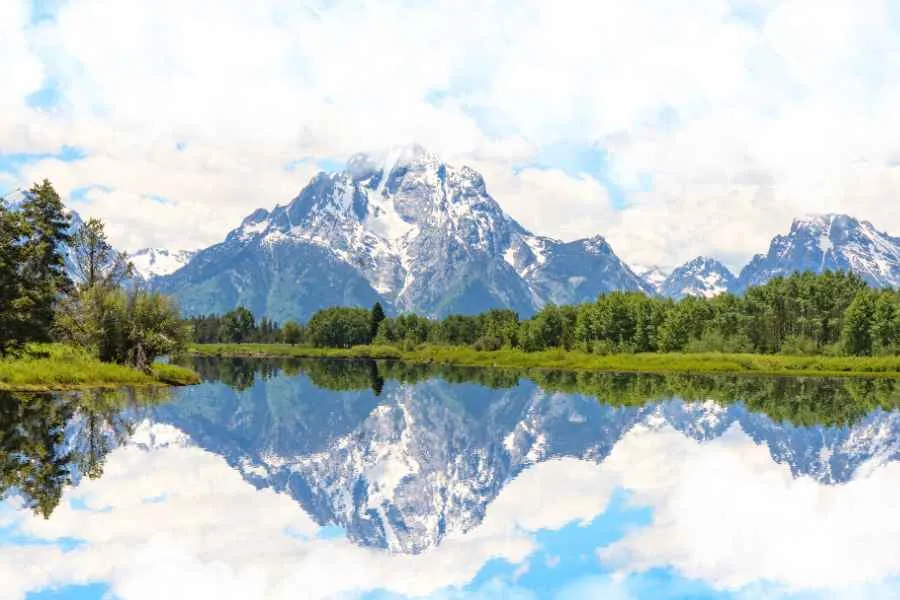
Ecotourism in Grand Teton focuses on close-to-nature experiences such as mountaineering, hiking on hundreds of miles of trails with varying difficulty levels, kayaking or canoeing on pristine lakes, and fishing in natural environments. The park is also an ideal place for wildlife viewing, including moose, black bears, and bald eagles in their natural habitats.
Grand Teton encourages responsible tourism by asking visitors to comply with park regulations, pack out trash, avoid disturbing wildlife, and respect the natural environment. Visitor centers and park education programs provide useful information about local ecosystems and sustainable travel practices, helping visitors better understand the value of nature conservation.
Devil’s Tower National Monument: Explore Geology and Culture
Devil’s Tower National Monument, a monolithic rock tower rising dramatically from the vast plains of Wyoming, is not only a unique geological wonder but also an ecotourism destination combining cultural exploration. Devil’s Tower is sacred to many Native American tribes, and the area around the tower is home to diverse wildlife.
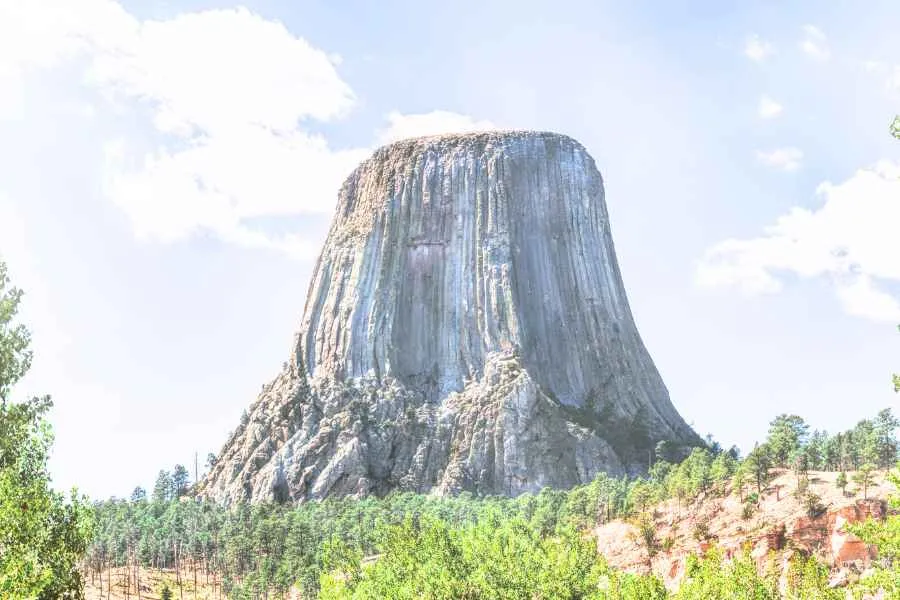
Ecotourism at Devil’s Tower offers the opportunity to discover a harmonious blend of nature and culture. Visitors can hike on trails around the tower to admire its unique geological beauty and learn about its formation history. Ranger-led programs provide information about local ecosystems, Native American culture, and conservation efforts at Devil’s Tower.

The Devil’s Tower area is also ideal for birdwatching and observing other wildlife. Visitors are encouraged to respect the cultural and spiritual value of Devil’s Tower to Native Americans, while practicing sustainable tourism by protecting the natural environment and cultural heritage of the area.
Jackson Town and Surrounding Area: Ecotourism Hub
Jackson Town, located near Grand Teton National Park, is a vibrant tourist center and also a gateway to exploring ecotourism in Wyoming. Jackson offers a blend of wild west style and modern amenities, making it an ideal stop for visitors before and after exploring the national parks.
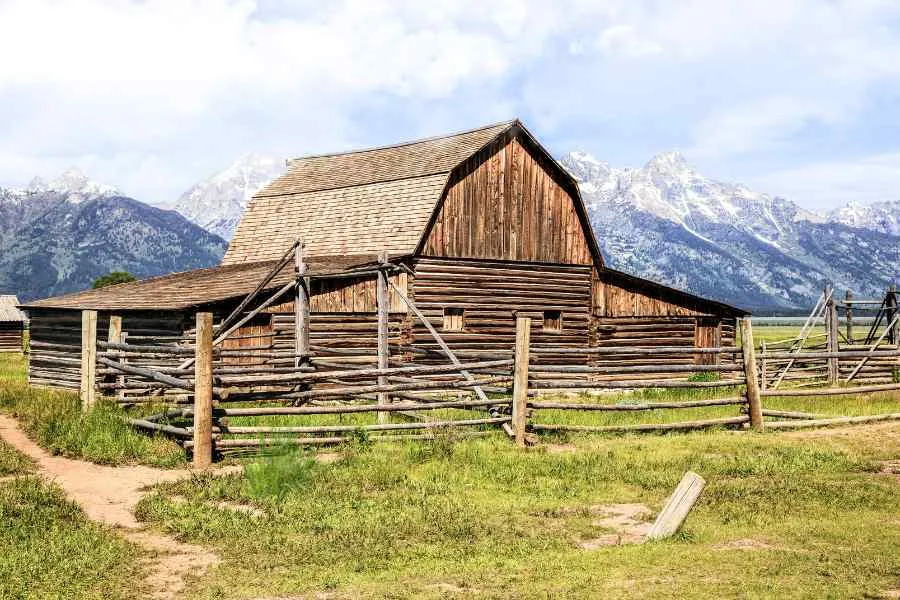
In Jackson and the surrounding area, visitors can find many sustainable ecotourism accommodation and service options. Hotels, lodges, and eco-resorts here focus on energy conservation, using environmentally friendly materials, and supporting the local community. Local tour operators offer professional ecotourism tours, guiding visitors to explore Wyoming’s wilderness safely and responsibly.

Jackson is also a place where visitors can experience unique Western culture, enjoy local cuisine, and shop for Native American handicrafts. The combination of wilderness and local culture creates a special attraction for ecotourism in the Jackson area and Wyoming in general.
Tips for Sustainable Ecotourism in Wyoming
To have a sustainable ecotourism trip in Wyoming, visitors should note a few tips:
- Plan and book services in advance: Especially during peak season, booking accommodation, tours, and transportation in advance will help you be proactive and ensure you choose reputable ecotourism services.
- Choose the right time to travel: Summer (June to September) is an ideal time to explore Wyoming with warm weather and many outdoor activities. However, be prepared for crowds and book services early. Spring and autumn are also good options with more pleasant weather and fewer tourists.
- Use public or environmentally friendly transportation: In national parks, shuttle bus systems are a good option to reduce emissions and traffic congestion. If driving yourself, obey speed limits and traffic regulations to protect wildlife.
- Choose sustainable accommodation and travel services: Prioritize hotels, lodges, and tour operators with ecotourism certifications or environmental commitments.
- Respect nature and wildlife: Do not litter, do not make loud noises, do not feed wildlife, and maintain a safe distance when observing them.
- Conserve energy and water: Use water and electricity sparingly at your accommodation, bring your own water bottle, and limit the use of single-use plastics.
- Support the local economy: Purchase local products, enjoy local cuisine, and use services provided by local people to contribute to community economic development.
Conclusion
Wyoming is a wonderful sustainable ecotourism destination where visitors can discover wild natural beauty, experience unique culture, and contribute to environmental conservation. From the geothermal wonders of Yellowstone, the majestic beauty of Grand Teton to the mysterious Devil’s Tower, Wyoming offers countless memorable experiences for those who love ecotourism. Plan your Wyoming adventure today and experience authentic ecotourism! Are you ready for a sustainable ecotourism trip to Wyoming?